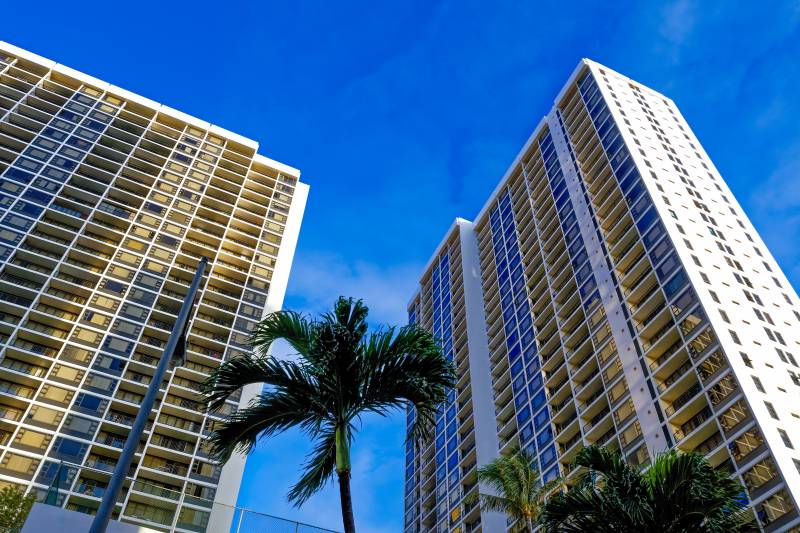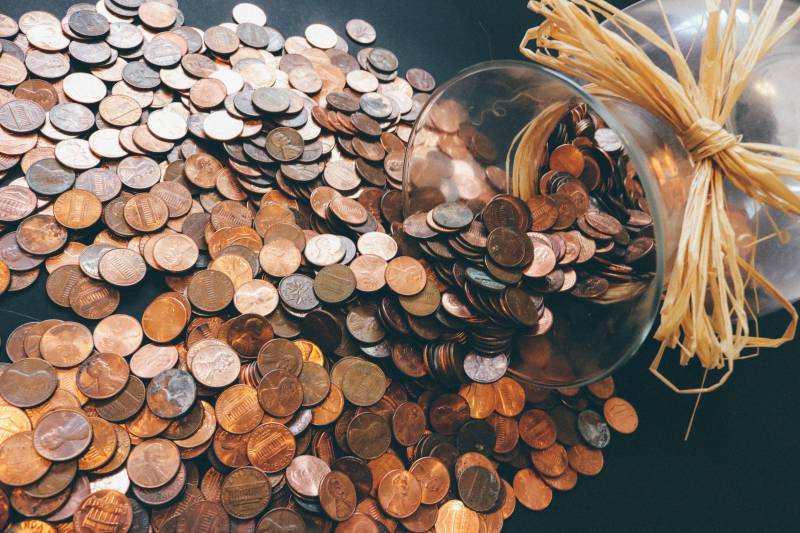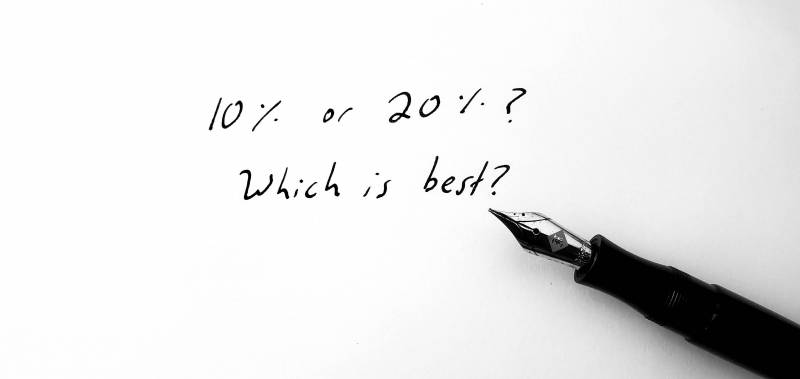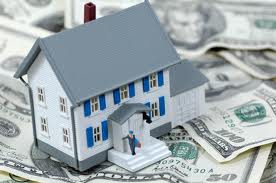Breaking the Golden Rule of Investing: Why Negative Cash Flow May Be a Positive Real Estate Investing Strategy in Hawaii
Breaking the Golden Rule of Real Estate Investing:
The *usual* golden rule of investing for most real estate investors, newbies and experienced investors alike, is making sure that you have an increase in both equity and in cash flow with every investment you make. Building equity means that you will be able to re-sell your property at a later date and receive money back from your purchase. Cash flow, on the other hand, is usually the passive income generated by property through rental income. To new investors, cash flow is king. But should it be?
What if we spin that idea on its head and completely throw out conventional wisdom?
Can embracing negative equity lead to good things?
More specifically, what if you buy a place you know for a fact will cost you more on a monthly basis than the rental income you receive? Can that EVER be a good idea?
My answer, simply put, is: “Yes.”
The more complex answer: With a careful investment plan for Hawaii real estate, crafted by a numbers-savvy realtor, in conjunction with a numbers-savvy lender, you may even be able to double your real estate equity over a period of 30 years by accepting negative cash flow as an investment strategy in Hawaii. Buying a property that you know will not be fully paid for by rental income is often a powerful way to grow your net worth.
Why would this even work? Well, this article will explore why positive cash flow can directly conflict with maximum debt leveraging, meaning that focusing on positive cash flow can directly reduce your portfolio’s tenant-paid equity buildup. And if we apply this same logic, then decreasing cash flow intentionally may mean that we can increase our overall equity buildup with careful planning.
→Sounds crazy, huh??? Then buckle up and enjoy the ride!
Quick pit stop– here is a small intro about me, the author:

Joey Furlett, JD, R(B), REI
Hello Reader,
My name is Joey Furlett and I am a Realtor-Broker at Hawaii Life and hold a Real Estate Investing Certification from RRC. As of the publishing date of this article (February of 2022) I am also a licensed and practicing attorney* in both Hawaii and Illinois. In my legal career I have closed over 1,500 transactions ranging from residential to mixed-residential/commercial, to commercial. I have also helped with numerous land acquisitions and redevelopment projects. Needless to say, I have dealt with a lot of investors, and funny enough, as an attorney I’ve even advised lenders regarding real estate financing strategies and options. Please note, however, that I am not an attorney for Hawaii Life and I do not act as an attorney in my role at Hawaii Life. At Hawaii Life I am a Realtor who used his vast experience throughout the real estate industry to help clients with their home ownership and investing strategies. If you are interested in talking about properties in Hawaii, or are thinking about buying in Hawaii, feel free to reach out:
Joey Furlett, JD*, R(B), REI (REALTOR-Broker # RB-23572)
My personal site: www.hawaiilife.com/joeyfurlett
Phone/Text: 808-818-8811 | WeChat / Insta / TikTok: HawaiiHome8
Real Estate Investing Certification by RRC | Luxury Homes Certification by RRC
(*Joey is licensed as an attorney in both Hawaii and Illinois, but to be clear, he is not practicing law in his role at Hawaii Life)
In defense of throwing cash flow under the bus, so to speak:
In investing we are often told that the best practice is to ensure that we are always making the most cash flow possible. Why? People like money. And they like seeing their money MAKE money. There are huge books written about this very principle. They are built around the same common trope: “Make your money make money for you!” Negative cash flow, to most people, sounds like a very bad thing. But it actually may be a symptom of a very aggressive and extremely powerful investing strategy.
In fact, carefully done, it may lead to equity buildup that would be impossible for regular investment classes. Do not get me wrong– this is by no means a “get rich quick scheme,” and all investments have risks.
However, in real estate, leverage + rent + time = equity build-up. The addition of rental income is one of the key ways that real estate differs from a traditional investment vehicle.
Comparing traditional investments with real estate:
With a traditional investment, the monetary input by the investor leads to a direct financial outcome. For example with stocks, you put in a set amount of money. No one else buys into the stocks. If you put $500 in, your growth and equity buildup is based on this initial investment of $500.
In contrast, with a traditional real estate investment, you put an initial deposit in, but you do so with the hopes of a tenant fully paying for the monthly debt on your loan on the real estate. As the landlord, you gain title to the property but you also take on the loan. Then as the landlord you must make your property sufficiently appealing on the open market to convince a tenant that this property is a good place to live and is worth the monthly cost. As the tenant pays down the loan on the building, you may eventually gain full ownership of the property without a mortgage. Once the mortgage is paid off, this property may either be rented for continuous passive income, or it may be sold or leveraged to place into other investments.
In newer schools of thought regarding real estate investments, partially paid off properties can be leveraged (ie the equity build-up on them can be leveraged using loans of various kinds), and these monies can be used to buy additional investments which are also usually real estate. The goal is to have multiple properties and thereby increase passive cashflow. Under this model, people buy properties expressly for cash flow.

Condo units can be a great way to get into real state investing.
But, what if we turn even that newer school of thought on its head completely? What if we buy real estate while planning for negative cash flow?
Well, it is really counterintuitive, but it may lead to a significantly increased tenant-funded equity buildup relative to planning that gives a positive cash flow. In a perfect world, we are not looking to lose money. So, there is a kneejerk negative reaction to paying out of one’s own pocket towards an investment property. However…negative cash flow can actually be a symptom of a really good investing strategy that maximizes your leveraging ability and utilizes smaller down payments in order to increase your equity buildup. Sound interesting? Read on…
What negative cash flow really means (comparing to a 401k):
Negative cash flow works much like a 401k in certain ways. For example, take an employer-matched plan: You pay in an amount, and your employer (a 3rd party) pays in an amount towards your fund. Your equity increases by both your actions and the actions of your employer. For every dollar you put in your employer puts in a dollar.
Tenant-funded property investments with negative cash flow work similarly. First, you put in a down payment. Then, you pay a small part towards the mortgage payments every month. The tenant, however, pays significantly more money towards the mortgage. Over time, this should lead to equity buildup where the vast majority of dollars put towards the investment property are paid by a tenant. Unlike an employer-funded 401k program, you only put only a small fraction of the total cost into the property, whereas the tenant pays the majority. Therefore a negative cash flow property investment is a way to have a form of matched investment account that can exceed an employer-matched plan.
This strategy works well with both residential and commercial real estate properties. For better diversification of assets, I usually suggest a combination of commercial, residential, and mixed residential parcels. While short-term rentals are often lauded as get rich quick schemes, I personally suggest a more careful and stable rental investment.
Accepting and perhaps embracing negative cash flow is, therefore, part of a cautious-but-aggressive investment strategy where an individual may be able to acquire more parcels, in less time, than through traditional methods.

Down payment percentages, compared:
Why a 10% down payment may be the way to go:
In short, in my professional experience, the down payment percentage has a direct effect on whether there is a positive cash flow or not. Many investment guides sell readers on the beautiful idea of buying a property with a 20% down payment. These guides suggest that by using their strategy you will have perhaps a couple hundred dollars of extra income each month that can be spent on various luxuries or investments. So… why aren’t they suggesting a 10% down payments? Well, simply enough, they do not want complaints from unhappy readers who buy a house and then start “losing money every month.” But what a traditional investment buyer would call “losing money every month,” I would call “increasing leverage to increase equity buildup by embracing negative cashflow.”
So, fun fact based on my professional experience in both law and real estate: with many investment properties, you only get cashflow when you put down a 20% down payment, especially once you factor in all ownership costs. Especially if you are an out-of-state buyer in Hawaii, the numbers get pretty tight for positive cash flow unless you use a large down payment. It is rare that a Hawaii property with an out-of-state buyer gives instant cash flow upon purchase without at least a 20% down payment, therefore.
By buying with a 10% down payment, however, you may be able to significantly increase your land holdings and tenant-paid equity-buildup. Doing this, however, means likely accepting a negative cash flow. In the short term, no one likes paying money. In the long term, paying a small amount of money per month can lead to huge gains in equity, and can lead to possibly even doubled rental income and doubled equity buildup.
This may sound too good to be true, so let’s walk through what I mean. Suppose we have a house worth $400,000.00…Let’s do some hypothetical down payment scenarios…
Hypothetical investment scenarios with a $400,000.00 house purchase and down payments of 10% vs. 20%

Which down payment works best for your investment strategy? 10% or 20%? Image courtesy Joey Furlett, JD, R(B), REI
Quick ground rules:
To run these hypothetical simulations, we are using some simplified numbers and calculations, and because this could get really confusing if we started talking about interest rates, we assume an interest rate of 0%.
Quick note on down payments and how they affect monthly payments:
The lower the down payment, the higher the monthly payment, the less chance there will be positive cash flow. The higher the down payment, the lower the monthly payment, the higher the chance there will be positive cash flow.
Let’s say you use a 10% down payment–what happens?
→For a $40,000 down payment, you need a loan to cover $360,000. That means, assuming zero interest (there is always interest), on a 30-year mortgage, you would need to pay at least $1,000 just to cover the principal (amount of the payment that goes towards the non-interest portion of the loan)
Math behind the magic for a 10% down payment:
$400,000 price [minus] $40,000 down payment → $360,000 principal balance
$360,000 [divided by] 30 years → $12,000 per year
$12,000 per year [divided by] 12 months → $1,000 per month to cover just principal
Let’s say you use a 20% down payment–what happens?
→ For a $80,000 down payment, you need a loan to cover $320,000. That means, assuming zero interest (there is always interest) on a 30-year mortgage, you would need to pay at least $888.89 just to cover the principal (amount of the payment that goes towards the non-interest portion of the loan).
Math behind the magic for a 20% down payment:
$400,000 price [minus] $80,000 down payment → $320,000 principal balance
$320,000 [divided by] 30 years → $10,666.67 per year
$10,666.67 per year [divided by] 12 months → $888.89 per month to cover just principal
Comparing the 10% and 20% down payment:
So, with a 10% increase in the down payment on the purchase, from 10% down payment to 20% down payment, and before we even talk about interest, there is a roughly 11.11% reduction in the total monthly payment needed to cover principal payments just from the increased purchase price.
More math to compare the down payments:
Monthly payment for the 10% down payment: $1,000.00
Monthly payment for the 20% down payment: $888.88
Therefore…. We look to the difference between the monthly payments for a 10% and 20% down payment…
$1000-888.89 = 111.11 difference between payments at 10% and 20%
Then, we look at the percentage reduction in monthly payment between a 10% and a 20% down payment:
$111.11 ÷ $1,000 payment → 11.11% less payment with a 20% down payment (versus a 10% down payment)
Note: In a conventional investor strategy, this 11.11% reduction is looked at like gold. Why? Well… monthly rental values in many markets and locales, usually roughly match the monthly payments you would have with a 20% down payment. So, this 11.11% difference (again assuming no interests) is usually lauded as “cash flow with a 20% down payment.”
BUT… and this is huge… just like I noted above, this means that cash flow is directly related to the amount of the down payment!
Conventional wisdom says: If I increase my down payment by 20% I reduce my loan principal, and reduce my payments, and I get *positive cash flow.*
This brings us to….
The conflict between leveraging and cash flow
One of the other maxims of real estate investing is that you only gain maximum equity by maximum leverage. However, this directly conflicts with the desire for cash flow.

The goal of real estate investment is to make your properties create the most equity buildup relative to property owner investment.
Suppose you have $80,000 in savings but only use $40,000 for a 10% down payment on a $400,000 investment property, what then?
Answer: that means you have an additional $40,000.00 you could still use as a down payment to invest in more property so long as you do not exceed your debt to income ratio. In other words, you may be able to up to double your potential investments that are partially tenant-funded.
Quick caveat: This strategy will need to be coordinated with a good lender who knows what they are doing. Debt to income ratios will affect the final numbers of how many dollars of mortgages a borrower can take on. In other words, the amount of leveraging needed to maximize this investment strategy will be a coordinated effort between your Realtor and your lender.
Why is it possibly a good thing to have a second investment property?
Answer: Because the goal in real estate investing is to make each dollar you invest do as much work as possible. More properties paid for slowly by rental income means a greater personal equity buildup over time.
Let’s go back to our hypothetical again…
- With a 20% down payment ($80,000) on a $400,000.00 property, you may get positive cash flow, but assuming you pay every payment on time and have no prepayments, you will have a 30-year equity buildup of $400,000 (assuming no appreciation)
- With TWO 10% down payments ($40,000 each) on TWO $400,000 properties, you likely have negative cash flow as to both properties. You may be paying a couple hundred dollars per month for this arrangement, depending on how your investments perform. However, in 30 years of regular payments you would have an equity buildup of $800,000 (assuming no appreciation). If the negative cash flow was $200/month, then over 30 years you have paid $72,000.00 for the extra $400,000 of equity buildup from having a double investment
That means for every dollar you have paid into the properties, you would get roughly $5.56 in value assuming no appreciation. That means that by embracing negative equity to increase your leverage, you may be able to multiply your investment quite a bit more than you might expect from other investment devices. Compare these numbers to an employer-matched 401k, for example. Whereas in an employer-matched 401k you could have each dollar you make lead to 2 dollars, in a tenant-paid rental property you may be able to have a much higher return for each dollar.
Hypothetical numbers showing how a negative equity rental could produce investment value:
What matters, however, is the ratio of who is paying what. Let’s think of your investment property, for a minute, like an employer-matched pension plan. You pay in, and your employer pays in.
With an investment in real estate, the same principles hold. Except, here is an example:
Monthly mortgage and HOA: $2200
Monthly rent: $2,100
GE tax (simplified): about 100 bucks
→In this situation, you are actually paying roughly $200/month, or $2,400/year in order to own a property. However, the renter is also paying towards the costs. The renter is paying $24,000/year towards your ownership. While you do not get positive cashflow, the $24,000 paid by a renter and the $2,400 paid by you both go towards the equity buildup on the house. Within ten years, assuming no inflation, you will have paid $24,000 for a value of $240,000.
Running the numbers, tenant-supported property investment can be a valuable way to increase your overall net worth through a modest monthly investment.
Final thoughts:
Dear Reader,
Thanks for taking the journey with me to explore why we may want to break the golden rule of investing in real estate. I hope you enjoyed the ride. This article is a tad theoretical but it shows an example of a way to increase leverage to potentially increase the value of your real estate portfolio. As with any investment, there are never guarantees, but with a good strategy you can make the best plan to build your portfolio of investments. If you want to talk more about investment homes in Hawaii, please feel free to reach out to me at 808-818-8811.
Cheers and aloha,
Joey

Sanjay Arora
February 10, 2022
Aloha Joey,
This was very well written and thought-provoking.
Mahalo for sharing!
Sanjay
Joey Furlett, JD, R(B), REI
February 10, 2022
> Hey Sanjay,
Thank you for your nice comment! I appreciate it! 🙂
Cheers and aloha,
Joey
Marcel D
February 10, 2022
This was laid out quite well, thank you. In summary: A higher down payment to get “positive cash flow” is doing so by using your OWN money that could be used elsewhere. You are putting in more of your own money up front so that you can get some of it back every month! Smaller down payment means you can KEEP your money in the bank, or invest elsewhere, and use it for making those monthly payments.
The only issue I see is bank lending rules. In Canada, we can’t get a mortgage on a rental property without having a certain percentage downpayment. 10% doesn’t cut it. Usually it is a minimum of 20% and sometimes as high as 50% depending on expected the rental income. The lenders typically only take into account 50% of the expected rental income towards your income due to expected vacancies, even though we are at less than 4% vacancy rate. US lending rates must be less strict (which may also be why you got into so much trouble in 2008!)
I bought my condo in Hawaii by refinancing my mortgage on one of my properties in Canada and then paying cash for it.
Joey Furlett, JD, R(B), REI
February 10, 2022
> Hey Marcel,
Your summary is very good. Much of the focus on cash flow given in traditional real estate investing advice may give a false sense of good investment strategy, whereas you are only seeing part of the the margins between a 10% and a 20% down payment as “positive cash flow.” It is an observation I have made over time and wanted to share with others. 🙂 I hope you enjoyed my article!
RE: Lending rules and rental percentages– The maximum leverage will be calculated on a person by person basis after the debt to income ratio is determined on any primary property and then on the investment property. While I am not a lender, and I only work as a realtor at Hawaii Life, when I put on my attorney* hat I have advised lenders for years on funding requirements (*again, I am not an attorney for Hawaii Life and not an attorney at Hawaii Life). The amount of income that can be used for an investment property usually lies at 75%. However, if you are a Canadian citizen or there is a significant HOA or other special assessment or planed project a smaller percentage could be used. US lending rules until the financial crisis in 2008 were honestly quite lax, and lenders were allowing financing based almost solely on property value rather than income levels. The idea, in simplification, was that if the house was worth enough then it didn’t matter whether a buyer could pay (something called a subprime mortgage). In fact, if the value margins were high enough, the banks sometimes preferred buyers to fail so the bank could scoop up properties at a fraction of the price and then re-sell. Speculation on the value of these subprime mortgages that were almost doomed to be foreclosed upon led to that crash as speculators trading in these mortgages got burned. And, in sad irony, these early 2000’s trades in speculative mortgages looked shockingly like the 1980’s junk bond trades.
Luckily, these days we have better safeguards in place that protect buyers. The goal is to build equity, not lose it all. And now with the Truth in Lending Act and the Anti-Predatory Lending disclosures, we have a better system in place.
Cash can be a good way to buy, particularly for short term rentals, but it reduces the overall leverage, meaning that your equity grows less over time for that real estate asset. If you want to chat more about it, please reach out at 808-818-8811
Cheers and aloha,
Joey